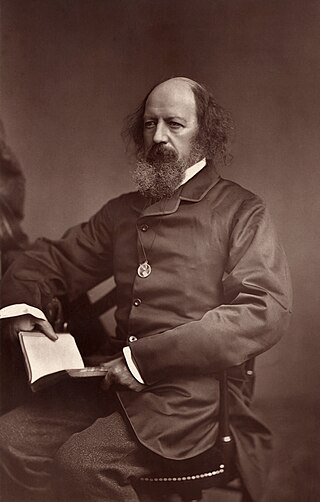
Alfred Tennyson, 1st Baron Tennyson was an English poet. He was the Poet Laureate during much of Queen Victoria's reign. In 1829, Tennyson was awarded the Chancellor's Gold Medal at Cambridge for one of his first pieces, "Timbuktu". He published his first solo collection of poems, Poems, Chiefly Lyrical, in 1830. "Claribel" and "Mariana", which remain some of Tennyson's most celebrated poems, were included in this volume. Although described by some critics as overly sentimental, his verse soon proved popular and brought Tennyson to the attention of well-known writers of the day, including Samuel Taylor Coleridge. Tennyson's early poetry, with its medievalism and powerful visual imagery, was a major influence on the Pre-Raphaelite Brotherhood.
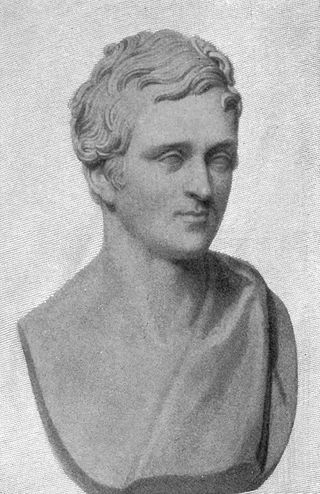
Arthur Henry Hallam was an English poet, best known as the subject of a major work, In Memoriam, by his close friend and fellow poet Alfred Tennyson. Hallam has been described as the jeune homme fatal of his generation.

The poem "In Memoriam A.H.H." (1850) by Alfred, Lord Tennyson, is an elegy for his Cambridge friend Arthur Henry Hallam, who died of cerebral haemorrhage at the age of twenty-two years, in Vienna in 1833. As a sustained exercise in tetrametric lyrical verse, Tennyson's poetical reflections extend beyond the meaning of the death of Hallam, thus, "In Memoriam" also explores the random cruelty of Nature seen from the conflicting perspectives of materialist science and declining Christian faith in the Victorian Era (1837–1901), the poem thus is an elegy, a requiem, and a dirge for a friend, a time, and a place.

"The Charge of the Light Brigade" is an 1854 narrative poem by Alfred, Lord Tennyson about the Charge of the Light Brigade at the Battle of Balaclava during the Crimean War. He wrote the original version on 2 December 1854, and it was published on 9 December 1854 in The Examiner. He was the Poet Laureate of the United Kingdom at the time. The poem was subsequently revised and expanded for inclusion in Maud and Other Poems (1855).
"Crossing the Bar" is an 1889 poem by Alfred, Lord Tennyson. It is considered that Tennyson wrote it in elegy; the narrator uses an extended metaphor to compare death with crossing the "sandbar" between the river of life, with its outgoing "flood", and the ocean that lies beyond death, the "boundless deep", to which we return.

"The Two Voices" is a poem written by future Poet Laureate of the United Kingdom Alfred, Lord Tennyson between 1833 and 1834. It was included in his 1842 collection of Poems. Tennyson wrote the poem, titled "Thoughts of a Suicide" in manuscript, after the death of his friend Arthur Henry Hallam in 1833. The poem was autobiographical.

"Mariana" is a poem by Alfred, Lord Tennyson, published in 1830. The poem follows a common theme in much of Tennyson's work—that of despondent isolation. The subject of "Mariana" is a woman who continuously laments her lack of connection with society. The isolation defines her existence, and her longing for a connection leaves her wishing for death at the end of every stanza. The premise of "Mariana" originates in William Shakespeare's Measure for Measure, but the poem ends before Mariana's lover returns. Tennyson's version was adapted by others, including John Everett Millais and Elizabeth Gaskell, for use in their own works. The poem was well received by critics, and it is described by critics as an example of Tennyson's skill at poetry.

"The Deserted House" is a poem written by Alfred, Lord Tennyson in 1830, as part of his collection Poems, Chiefly Lyrical. The poem is characterised by its reliance on short lines which alternate in rhyme and meter to prevent a felicitous feel. In the poem, Tennyson uses the image of a dark house as a metaphor for a dead body.
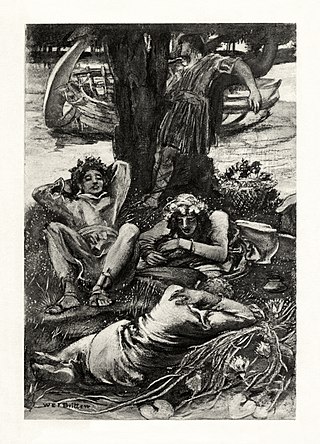
The Lotos-Eaters is a poem by Alfred Tennyson, 1st Baron Tennyson, published in Tennyson's 1832 poetry collection. It was inspired by his trip to Spain with his close friend Arthur Hallam, where they visited the Pyrenees mountains. The poem describes a group of mariners who, upon eating the lotos, are put into an altered state and isolated from the outside world. The title and concept derives from the lotus-eaters in Greek mythology.
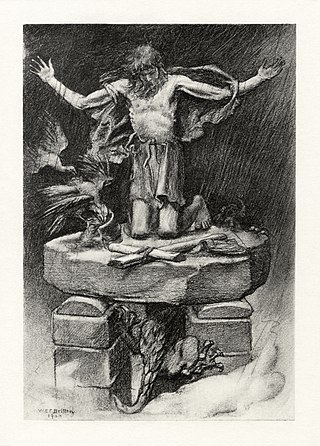
"St Simeon Stylites" is a poem written by Alfred Tennyson in 1833 and published in his 1842 collection of poetry. The poem describes the actions of St. Simeon Stylites, a Christian ascetic saint who recounts his various physical acts in hopes that he has earned his place in heaven. It captures Tennyson's feelings following the death of a close friend, Arthur Hallam, and contains feelings of self-loathing and regret. The work has ironic overtones that give it the appearance of a satirical work.
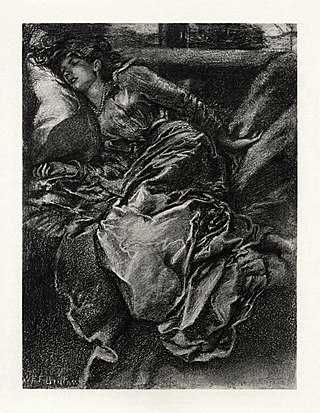
"The Day-Dream" is a poem written by Alfred Tennyson that was published in 1842. It was an expanded version of his 1830 poem "The Sleeping Beauty". It was further altered in 1848 for a dramatic performance for a private gathering with Tennyson starring as the Prince. "The Day-Dream" discusses the nature of sleeping and of dreaming, especially in relation to individuals that would want to escape from reality. The poem also compares the act of poetry with dreaming and asserts that the two are the same.

"Break, Break, Break" is a poem by Alfred, Lord Tennyson written during early 1835 and published in 1842. The poem is an elegy that describes Tennyson's feelings of loss after Arthur Henry Hallam died and his feelings of isolation while at Mablethorpe, Lincolnshire.
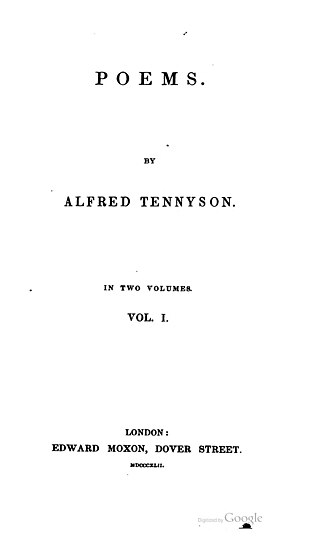
Poems, by Alfred Tennyson, was a two-volume 1842 collection in which new poems and reworked older ones were printed in separate volumes. It includes some of Tennyson's finest and best-loved poems, such as Mariana, The Lady of Shalott, The Palace of Art, The Lotos Eaters, Ulysses, Locksley Hall, The Two Voices, Sir Galahad, and Break, Break, Break. It helped to establish his reputation as one of the greatest poets of his time.

The Miller's Daughter is a narrative poem by Alfred Tennyson, first printed in 1833 and significantly revised in 1842.

"St. Agnes" is a poem by Alfred Tennyson, first published in 1837, revised in 1842, and retitled "St. Agnes' Eve" in 1857.

Lady Clare is a narrative poem by Alfred Tennyson, first published in 1842.
Poems, Chiefly Lyrical is a poetry collection by Alfred Tennyson, published in June 1830.
"Claribel: A Melody" is an early poem by Alfred Tennyson, first published in 1830.
"Recollections of the Arabian Nights" is an early poem by Alfred Tennyson, first published in 1830.
"The Ballad of Oriana" is an early poem by Alfred Tennyson, published in 1830, but not in 1833.

















